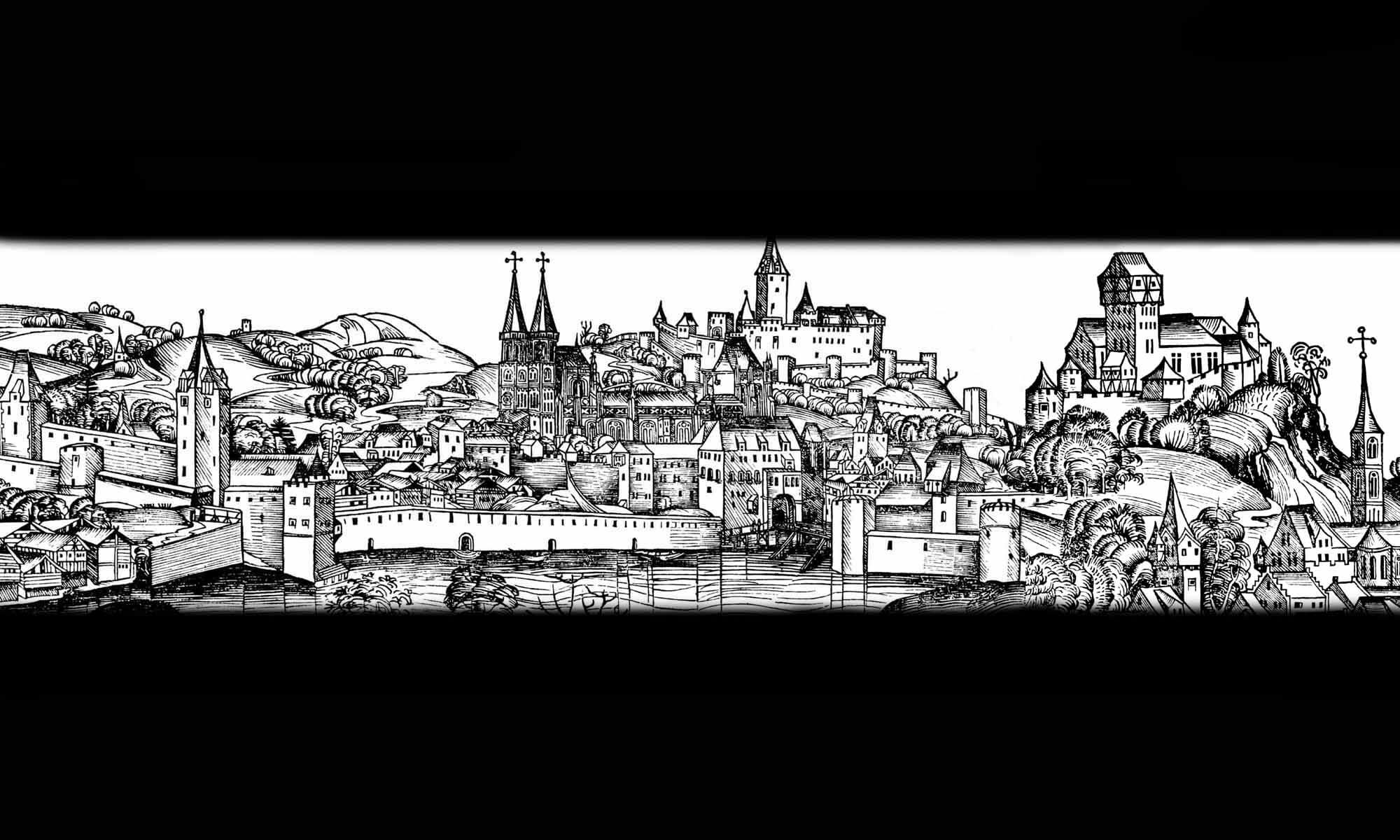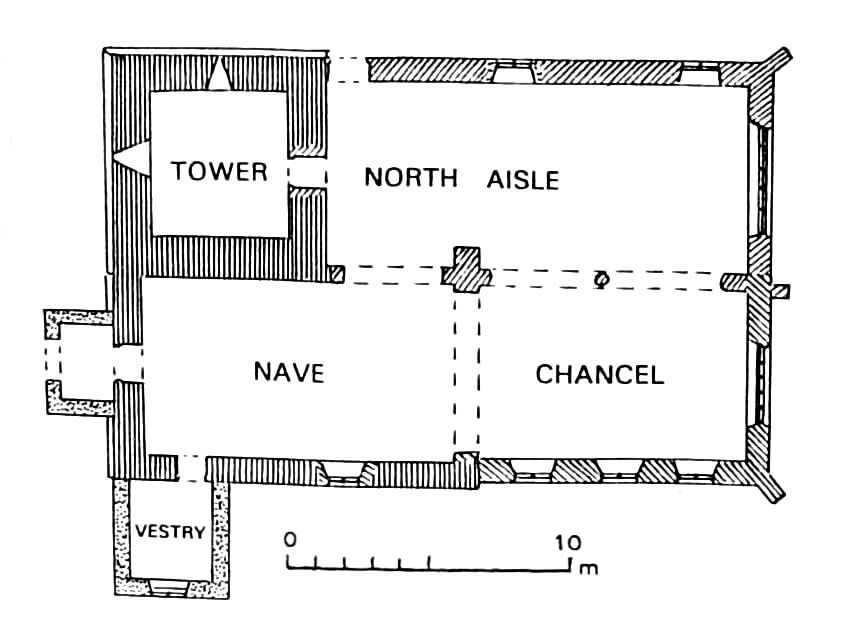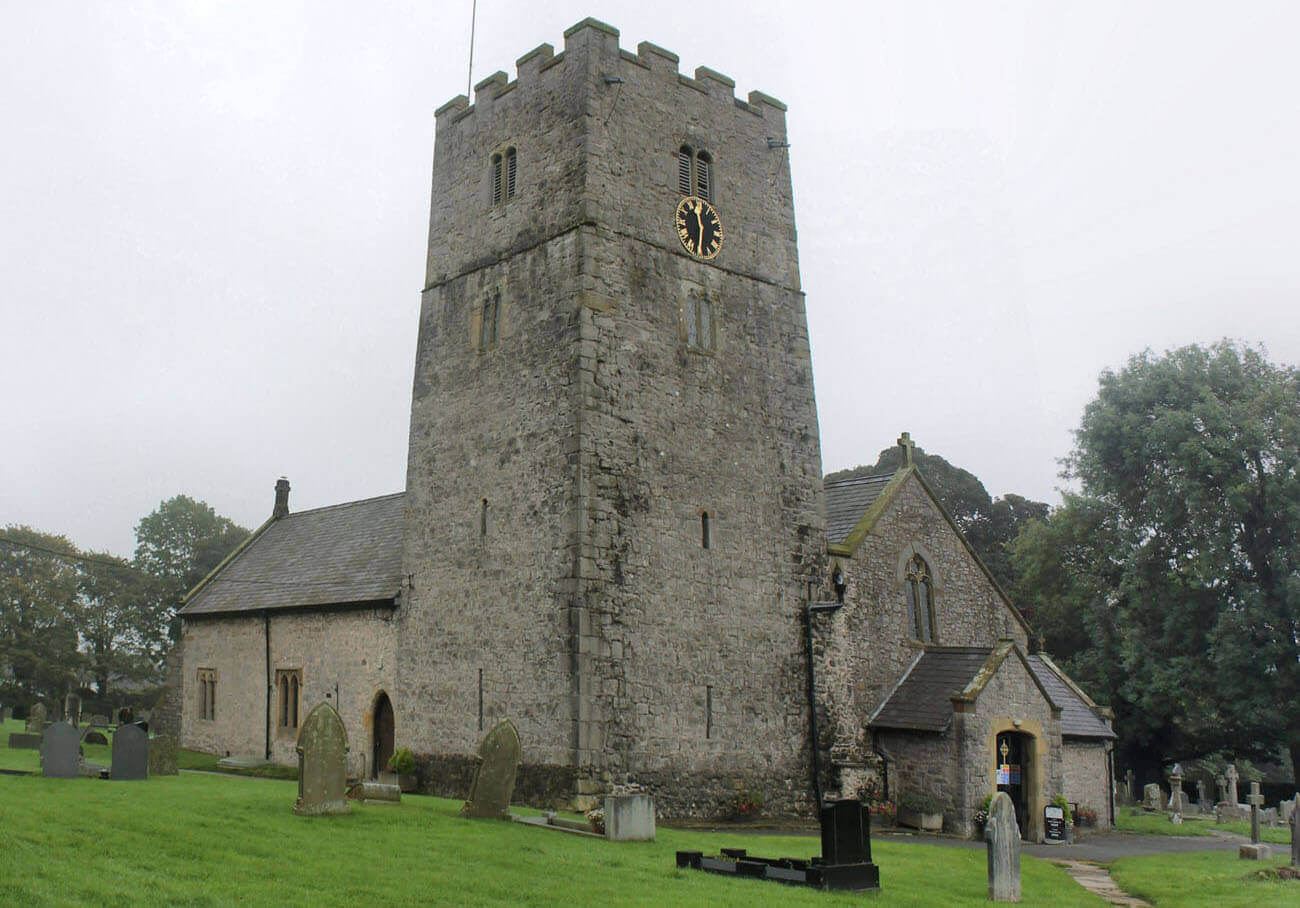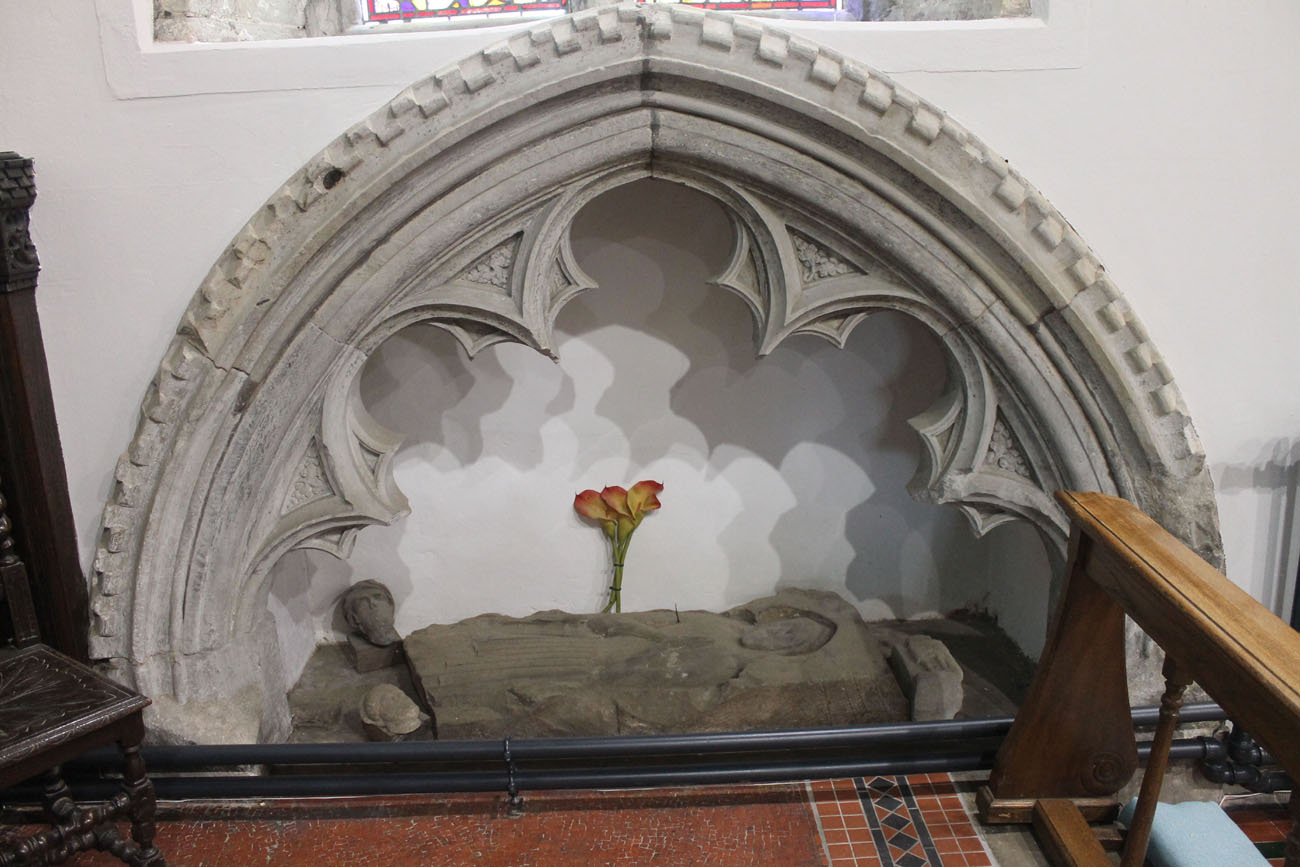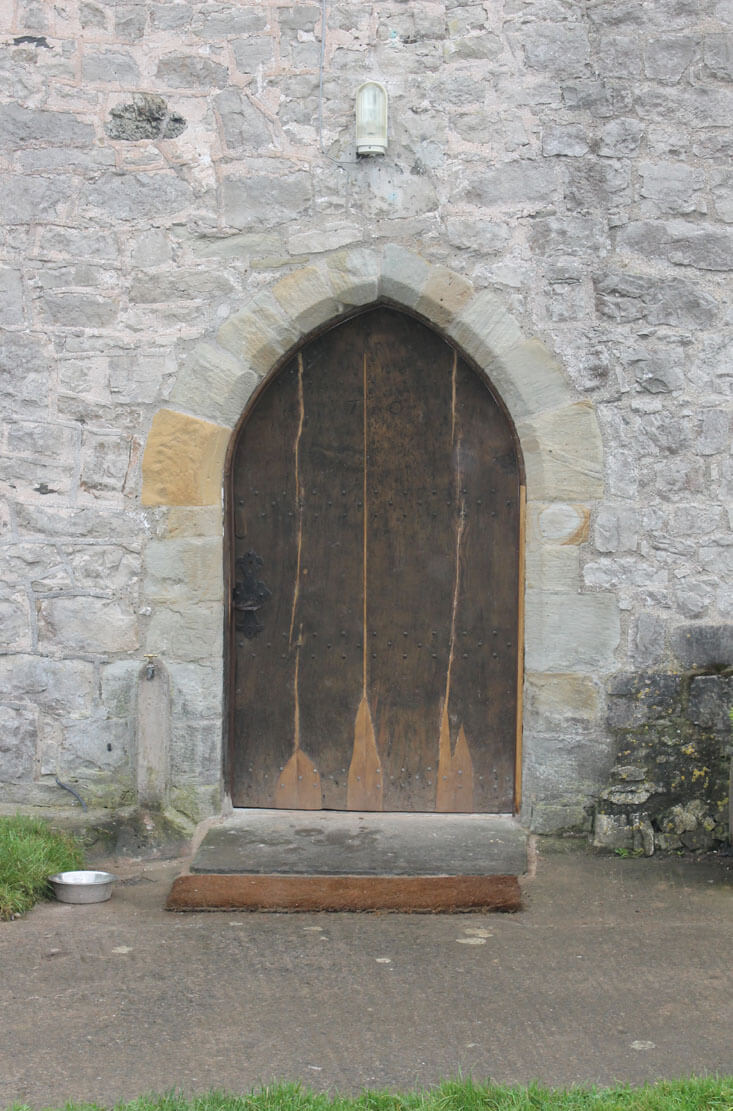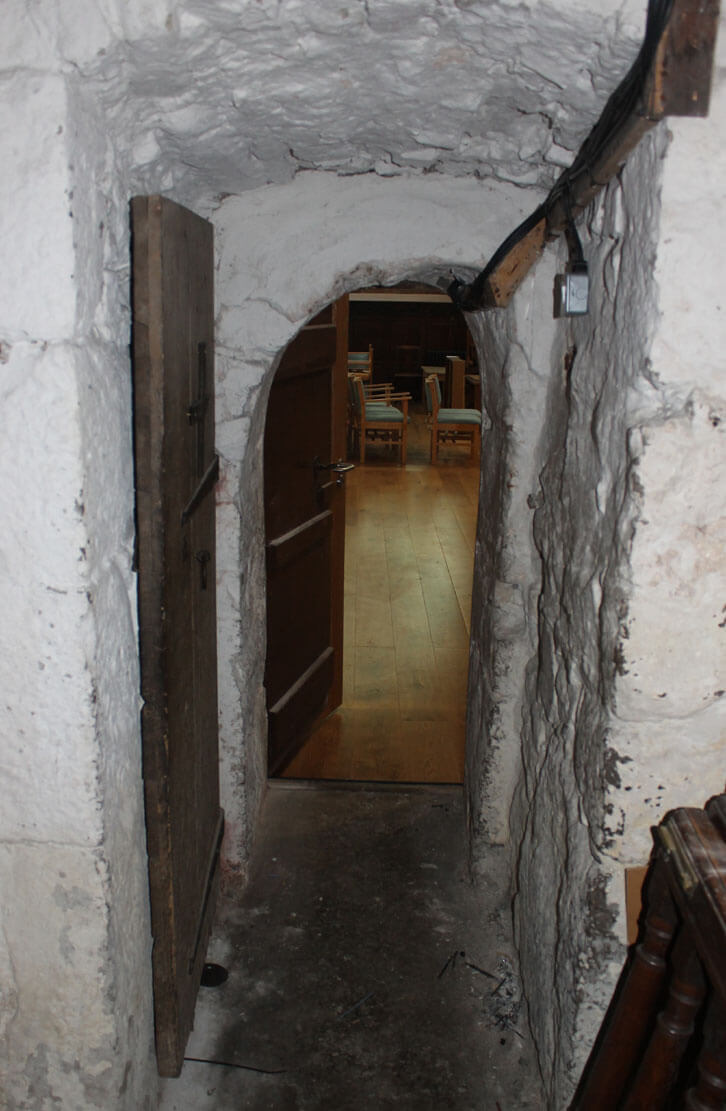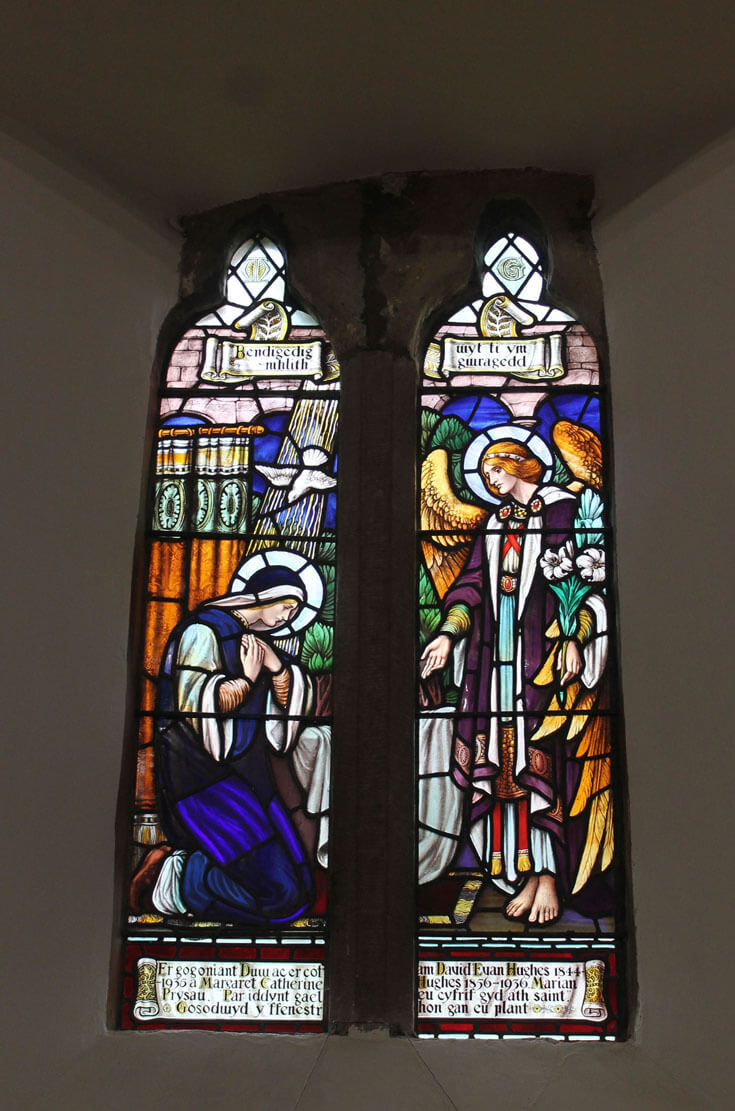History
Church of St. Michael’s in Caerwys was built in the late 13th century on the site of an older wooden structure. The earliest mention of the church was recorded in 1244, when the Pope chose it as the venue for a court hearing for two abbots, to determine whether Prince Dafydd ap Llywelyn had been forced to sign a treaty with King Henry III. The next record of St. Michael’s Church was made in 1284 („capelle de Kerwys”), when a sum of 60 shillings was paid to the parish priest Jervasius as compensation for the loss of tithes and damages caused by King Edward I’s soldiers during his conquest of Wales two years earlier.
In 1290, King Edward I granted Caerwys a town charter. Because the settlement lacked defensive walls, and the town hosted markets and a justice system with a court and prison, a need arose for a sturdy, defensive stone building. It was probably then that the church’s stone nave and adjacent massive tower were built. The latter served not only as a belfry, but also as a defensive shelter and perhaps a watchtower. The church was subsequently expanded in the 14th century to include a chancel and was enlarged again in the early 15th century with a northern aisle.
During the Reformation, St. Michael’s Church underwent its first early modern changes, including whitewashing of its walls and replacement of its furnishings. In 1687, the church roof was repaired, for which a significant amount of slate was purchased. In 1769, the tower was supposed to be raised, but it is possible that this was limited to repair works. In 1894-1895, the church underwent a thorough Victorian renovation, the most significant part of which was the reconstruction of the arcades in the chancel and the addition of a south porch. In 1904, the western porch was added due to the transformation of the southern porch into a vestry.
Architecture
The church was built in the southwestern part of the medieval settlement, which occupied a broad, gently undulating interfluve, a southern extension of the limestone plateau that nature had formed east of the Clwydian Hills and west of the Dee Estuary. To the east and west of the church, the area was cut by steep valleys with small streams flowing into the Wheeler River in the valley to the south. To the south of the settlement, the glacier had deposited limestone outcrops in the fields, but the settlement itself was founded on drift deposits of sand and clay.
The oldest element of the church of St. Michael from the 13th century, was a four-sided tower with 1 meter thick walls and narrow openings in the ground floor. From the south, it was adjacent to a rectangular nave, which in the fourteenth century was enlarged from the east by a slightly narrower chancel of similar length. At that time, the church was illuminated by narrow one and two-light windows with openings topped with trefoils.
At the beginning of the 15th century, the northern aisle was added, which doubled the capacity of the church. From the west it was adjacent to the tower, while in the east it had a common façade with the presbytery, although it was covered with a separate gable roof. In the period of English decorative and Perpendicular Gothic, larger windows were introduced into the walls of the church, of which two eastern windows were given particularly impressive forms. Both were closed with a pointed arches (though slightly flattened in the northern aisle) and filled with elaborate five-light traceries. They were also equipped with moulded drips imitating the shape of the archivolts.
Inside north aisle was opened with two arcades on the chancel and a single one arcade on the nave. The chancel arcades were originally of wooden construction, made of massive oaks. It is known that in the Middle Ages the chancel of the church was decorated with a canopy, and it was separated from the nave by a rood screen. The walls were probably decorated with paintings.
Current state
The oldest surviving part of the church is the tower, although its upper part may date from a later expansion. Completely modern elements are the western porch and the sacristy on the south side, as well as the arcades between the chancel and the north aisle. The original 14th-century two-light window, along with the other from the 14th and 15th centuries, have survived in the south wall of the nave. The windows visible in the chancel and north aisle walls have been renewed, but their shapes likely reflect medieval ones. Original stained glass are also believed to have survived in some windows. A late medieval roof truss, supported by 19th-century corbels, is visible inside the north aisle. A 13th-century tombstone has survived of Elisabeth Ferrers, wife of Dafydd ap Gruffydd, Prince of Wales. The church also contains a 14th-century tomb with a cross. The historic building is located on a large, flat cemetery with two gates, one of which dates back to the 15th century.
bibliography:
Blackburn R., St Michael’s Church, Caerwys, Flintshire. Archaeological Watching Brief, Welshpool 2017.
Hubbard E., Clwyd (Denbighshire and Flintshire), Frome-London 1986.
Martin C.H., Silvester R.J., Watson S.E., Historic settlements in Flintshire, Welshpool 2012.
Salter M., The old parish churches of North Wales, Malvern 1993.
The Royal Commission on The Ancient and Historical Monuments and Constructions in Wales and Monmouthshire. An Inventory of the Ancient and Historical Monuments in Wales and Monmouthshire, II County of Flint, London 1912.
Wooding J., Yates N., A Guide to the churches and chapels of Wales, Cardiff 2011.
